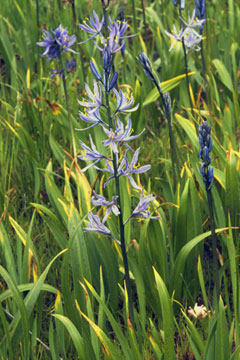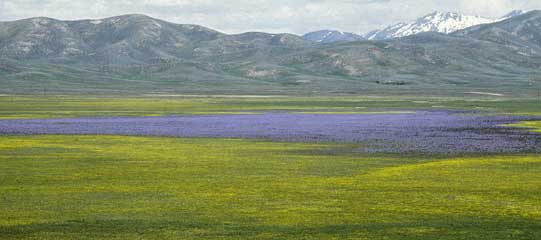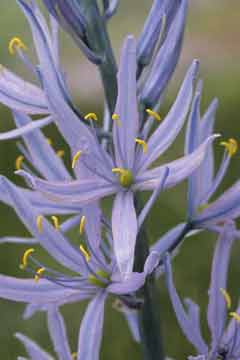Onion family, Alliaceae
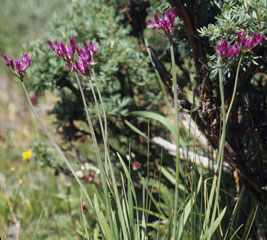 |
Short-styled onion, Allium
brevistylum S. Watson (left, right) is
a tall plant whose flowers are borne in a loose umbel. The flowers do not
open widely and the short style, from which the plant takes its names,
can’t be seen easily, as it can with many other onions. The plant’s
stems are much longer than its leaves. It prefers streambanks and other moist
locations, growing to treeline and higher. At lower altitudes the leaves
are bright green; at alpine elevations they take on a reddish hue. |
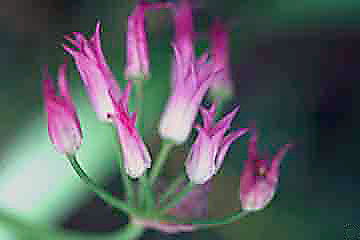 |
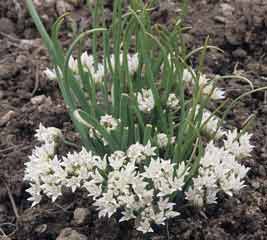 |
Brandegee's onion. Allium
brandegeei S. Watson (left,
right), grows on gravelly hillsides at all elevations, appearing soon after
the snowmelt. Often there are so many as to almost turn the ground white
with their flowers. Each flower has six tepals and each tepal has a
dark rib, usually more obvious on the outer side. The flowers, usually white,
are occasionally pink. The species name refers to Townshend Stith Brandegee
(1843-1925), an American civil engineer, botanist and plant collector, who
collected the plant in the Elk Mountains of Colorado. |
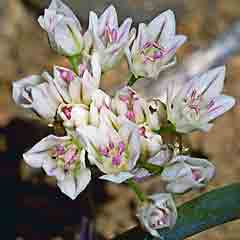 |
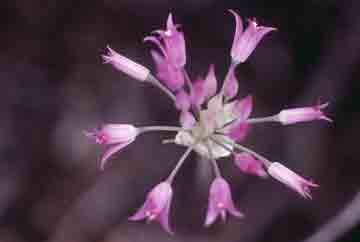 |
Hooker’s (also taper-tip) onion
, Allium acuminatum
Hook. (left, right) grows to moderately high elevations,
blooming on dry ground after other flowers have gone by. Its pink to purple
flowers are borne in a loose umbel atop a long, thin, leafless stem. Its
wispy, inconspicuous leaves have dried up by the time the flowers appear.
Hooker’s onion was collected by Archibald Menzies, ship’s surgeon
and botanist of the Vancouver Expedition, on today’s Vancouver Island
in the 1790s and later classified by William Jackson Hooker, professor of
botany in Glasgow. “Acuminate” means “ to taper to a sharp
point,” from the shape of the tepals.
|
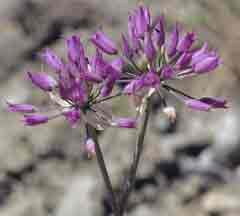 |
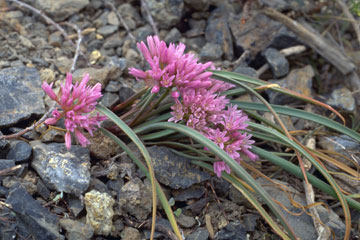 |
Allium
simillimum
L. F. Hend. (left, right). The deep
pink onion on the left was photographed on a mountain trail immediately north
of the Sun Valley resort. We identified it as Allium aase, a similar
species shown below. Several botanists have since examined dry specimens
and believe that it is a form of Allium simillimum, a (usually)
white-flowered plant. Since, we have seen other Allium simillimum
in varying shades of pink growing in the Wood River drainage
(right). The name simillimum, from the Latin, means
“similiar to,” possibly to another species of wild onion. There
seems to be no established common name for the plant.
|
 |
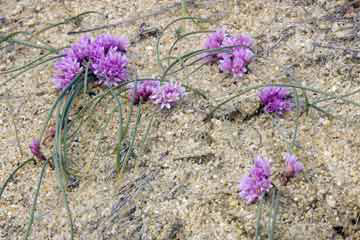 |
Aase's onion, Allium aaseae
Ownbey was formerly considered a rare plant found
only in the Boise foothills. Since, populations have been found as far west
as Weiser. These purple-flowered plants prefer south facing sand banks where
they are sometimes found in fairly large numbers. It is still considered
a sensitive species and steps have been taken to protect the plant,
understandably, for it is one of the most attractive of our wild onions.
The plant was named for botanist Hannah Aase of the University of Washington.
(Thanks to Mike Mancuso for showing me the ones pictured here.) |
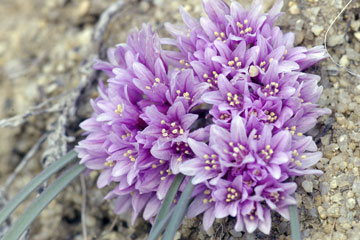 |
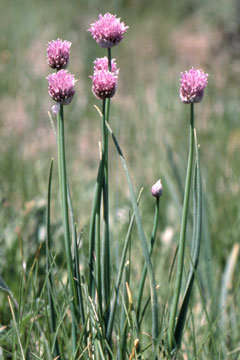 |
Chive, Allium schoenoprasum
L. (left). Our wild plant appears identical to the
garden chive--as it should; it is the same species. The plant is easily
identified—most everyone knows what chives looks like. Even lacking
its light purple flower head, the typical appearance of its hollow leaves
and its taste should clinch its identification. The species name,
schoenoprasum, is derived from two Greek words meaning “rush”
and “leek.”
Tolmie’s onion, Allium tolmiei
Baker (right) is an attractive, although not a common
plant found in the western part of north-central Idaho. It grows on dry,
gravelly ground and may be identified by its pink flowerheads and its notably
wide, flat, sickle-shaped leaves. These are quite long compared to the
short-stemmed flowerheads. William Frazer Tolmie (1812-1886) was a surgeon
with the Hudson’s Bay Company who was given a plant collection that
included this onion. Tolmie sent the collection to William Jackson Hooker
in England. Subsequently Tolmie’s name was attached to the plant. |
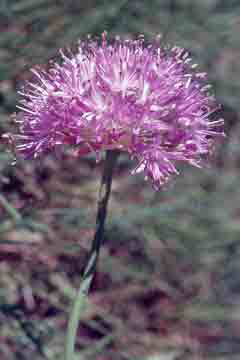 |
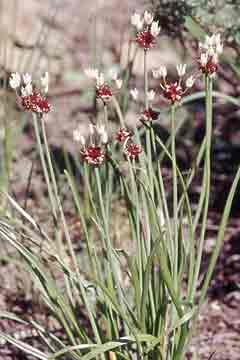 |
Geyer’s onion, Allium geyeri S. Watson
(left, right) is a common Rocky Mountain onion that grows,
often in large numbers, along mountain streams and in moist meadows, sometimes
in company with the short-style onion shown above. A tall white-flowered
onion, the bulbils, when present, make identication easy. The species name
honors Charles A. Geyer (1809-1853), a German botanist and plant-hunter who
was hired to collect plants in the western United States in 1843.
|
 |
